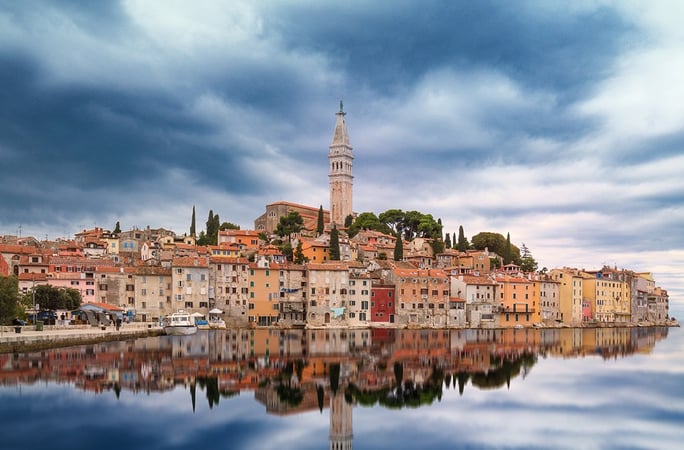The Ultimate Guide to Traveling to Croatia in 2025
Croatia, the jewel of the Adriatic, is a top destination for travelers seeking stunning coastlines, rich history, and vibrant Croatian culture. With its crystal-clear waters, mideieval towns, and over 1 000 islands, Croatia offers and unforgettable blend of natural beauty and culture charm. Named the 'Best Country to visit in Europe' for 2025 by European Best Destinations, Croatia'a popularity is soaring, thanks to acessibility and diverse attractions. This comprehensive guide covers essential travel tips for Croatia, the best places to stay in Croatia, and top attractions in Croatia to plan your perfect Croatia vacation.
6/2/20256 min read
Why Visit Croatia in 2025?
Croatia’s allure lies in its mix of Mediterranean charm, historic landmarks, and affordable travel options. From the UNESCO-listed walls of Dubrovnik to the turquoise lakes of Plitvice, the country caters to beach lovers, history buffs, and adventure seekers alike. In 2025, new flight routes and sustainable tourism initiatives make Croatia more accessible and eco-friendly. Whether you’re exploring Split’s ancient palaces or sailing to Hvar, Croatia promises a memorable European travel experience.
To start planning, book flights to Croatia and find the best Croatia hotels or vacation rentals for a seamless trip.
Travel Tips for Croatia
1. Book Flights to Croatia Early
Securing affordable flights to Croatia is essential for a budget-friendly trip. Major hubs like Zagreb (ZAG), Split (SPU), and Dubrovnik (DBV) are well-served by airlines like Croatia Airlines and budget carriers like Ryanair. Book 3-6 months in advance for peak seasons (June-August) to save. Use comparison platforms like Skyscanner to find deals (insert affiliate link here).
Tip: Midweek flights (Tuesday or Wednesday) are often cheaper than weekends.
Pro Tip: Consider flying into Zadar or Pula for cheaper fares and easy access to coastal regions.
2. Choose the Right Time to Visit
Croatia’s Mediterranean climate offers distinct seasons:
Spring (March-May): Mild weather, blooming landscapes, and fewer crowds—ideal for exploring Croatian national parks like Plitvice.
Summer (June-August): Perfect for Croatian beaches and island-hopping, but expect higher prices and crowds.
Fall (September-November): Warm days, lower rates for Croatia accommodations, and festivals like the Dubrovnik Good Food Festival.
Winter (December-February): Quieter, with affordable stays and festive Christmas markets in Zagreb.
Tip: Visit in May or September for pleasant weather and fewer tourists.
3. Understand Entry Requirements
Croatia is part of the Schengen Area, so non-EU travelers from visa-exempt countries (e.g., US, Canada, Australia) need an ETIAS authorization (€7) starting in 2025. Apply online at least 96 hours before travel. Ensure your passport is valid for three months beyond your departure date (insert affiliate link for visa services here).
4. Use Local Currency
Croatia uses the euro (€) as of 2023, making transactions straightforward for European travelers. Cards are widely accepted in cities like Dubrovnik and Split, but carry cash for smaller vendors or islands. Use fee-free cards like Revolut for withdrawals (insert affiliate link here).
Tip: Keep small euro denominations (€5-10) for markets and ferries.
5. Navigate with Ferries and Buses
Croatia’s islands are best explored by ferry (Jadrolinija or Krilo). Buses connect major cities like Zagreb to Split, while car rentals offer flexibility for rural areas like Istria (insert affiliate link for car rentals here).
· Tip: Book ferry tickets online for popular routes like Split to Hvar during summer (insert affiliate link here).
· Pro Tip: Download the Arriva Croatia app for bus schedules and tickets.
6. Learn Basic Croatian Phrases
English is common in tourist areas, but learning phrases like “Dobar dan” (Good day) or “Hvala” (Thank you) enhances your connection with locals. Use apps like Duolingo for quick lessons.
Tip: Croatians appreciate efforts to speak their language, especially in rural areas.
7. Stay Safe
Croatia is one of Europe’s safest countries, but pickpocketing can occur in touristy spots like Dubrovnik’s Old Town. Keep valuables secure and avoid flashy displays of wealth.
Tip: Book guided tours through trusted platforms like GetYourGuide to avoid scams.
Places to Stay in Croatia
Choosing the right accommodation is key to a memorable Croatia vacation. From luxury hotels in Dubrovnik to charming villas in Hvar, here are top recommendations for Croatia accommodations:
1. Dubrovnik: Pearl of the Adriatic
Dubrovnik’s medieval charm and coastal views make it a top choice. Stay in the Old Town for history or Lapad for beaches.
Luxury: Hotel Excelsior Dubrovnik – A 5-star seafront hotel with stunning views.
Mid-Range: Hotel Lero – Modern comfort near the Old Town.
Budget: Hostel Angelina Old Town – Affordable dorms in a historic setting.
Tip: Book early for summer, as Dubrovnik fills up fast.
2. Split: Historic Heart
Split’s Diocletian’s Palace and vibrant waterfront are perfect for culture and nightlife. Stay in the Old Town or Bacvice for beach access.
Luxury: Radisson Blu Resort & Spa – Elegant rooms with sea views.
Mid-Range: Hotel Park Split – Classic charm near Bacvice Beach.
Vacation Rental: Vrbo vacation rentals in the Old Town offer historic vibes.
Tip: Choose accommodations near ferry ports for easy island-hopping.
3. Hvar: Island Glamour
Hvar Island blends luxury, beaches, and nightlife. Stay in Hvar Town for vibrancy or Stari Grad for tranquility.
Luxury: Palace Elisabeth – A heritage hotel in Hvar Town.
Mid-Range: Hotel Fortuna – Family-friendly with beach access.
Budget: Villa Nora Hvar – Cozy guesthouse in Stari Grad.
Tip: Book ferries to Hvar in advance during summer.
4. Zagreb: Cultural Capital
Zagreb offers museums, cafes, and a vibrant arts scene. Stay in the Upper Town for history or Lower Town for modern amenities.
Luxury: Esplanade Zagreb Hotel – A historic 5-star gem.
Budget: Chillout Hostel Zagreb – Social vibe for backpackers.
Tip: Stay near Ban Jelačić Square for easy access to attractions.
Booking Tips
Reserve Early: Secure Croatia accommodations 3-6 months in advance for peak seasons.
Check Amenities: Look for free Wi-Fi, breakfast, and cancellation flexibility.
Eco-Friendly Options: Choose sustainable stays in Istria or Plitvice for a low-impact Croatia trip.
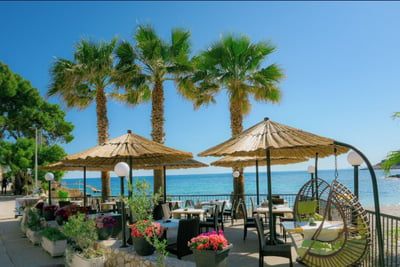

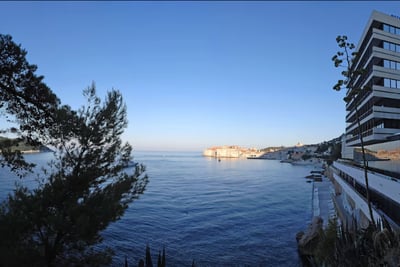

Places to See in Croatia
Croatia’s attractions range from UNESCO sites to pristine beaches. Here are the top attractions in Croatia you can’t miss:
1. Dubrovnik Old Town
A UNESCO World Heritage Site, Dubrovnik’s fortified walls and cobblestone streets are iconic. Walk the city walls for panoramic views or explore Lovrijenac Fortress.
Tip: Book skip-the-line tickets for the walls to avoid crowds.
Cost: €35 for wall access; guided tours ~from €20.
Activity: Take a Game of Thrones tour for fans.
2. Plitvice Lakes National Park
This UNESCO-listed park features turquoise lakes, waterfalls, and wooden walkways. It’s a must for nature lovers.
Tip: Visit early morning to avoid crowds and book tickets online.
Cost: €10-40 (varies by season).
Location: 2 hours from Zagreb.
3. Split’s Diocletian’s Palace
This 4th-century Roman palace in Split is a living UNESCO site with shops, cafes, and historic ruins.
Tip: Climb the Bell Tower for city views.
Cost: Free to explore; tower entry ~€7.
4. Hvar Island
Hvar’s lavender fields, beaches, and nightlife make it a top island. Visit the Fortica Fortress for stunning views.
Tip: Rent a boat to explore nearby Pakleni Islands.
Cost: Fortress entry ~€5; boat rentals ~€50/day.
Famous for its waterfalls and swimming areas, Krka is a scenic alternative to Plitvice.
Tip: Book a guided tour for deeper insights.
Cost: €7-30 (seasonal).
6. Zadar’s Sea Organ
This unique installation creates music from sea waves, paired with the stunning “Greeting to the Sun” light display.
Tip: Visit at sunset for the best experience.
Cost: Free.
7. Rovinj, Istria
This charming coastal town boasts colorful streets, a hilltop church, and fresh seafood.
Tip: Explore nearby Lim Fjord by kayak.
Cost: Free to explore; kayak rentals ~€20.
8. Korčula Island
Known for its medieval town and vineyards, Korčula is perfect for history and wine lovers.
Tip: Join a wine-tasting tour.
Cost: Tours ~€30.
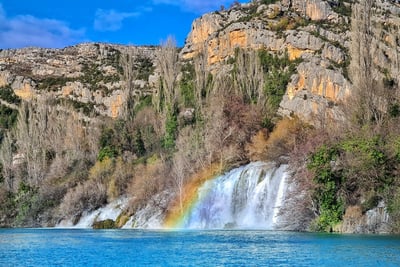

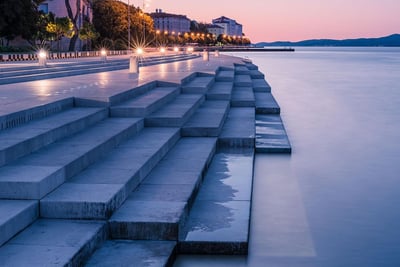

Croatian Cuisine and Dining Tips
Croatia’s food scene blends Mediterranean and Balkan flavors:
Must-Try Dishes: Peka (slow-cooked meat or seafood), black risotto, and strukli (cheese-filled pastry).
Top Restaurants:
Konoba Mate (Korčula): Authentic Dalmatian dishes.
Nautika (Dubrovnik): Fine dining with sea views.
Zoi (Split): Modern Croatian cuisine in Diocletian’s Palace.
Tip: Visit markets like Dolac (Zagreb) for fresh produce and street food. Book food tours for a culinary deep dive.
Cost: Meals range from €5-10 (street food) to €20-30 (restaurants).


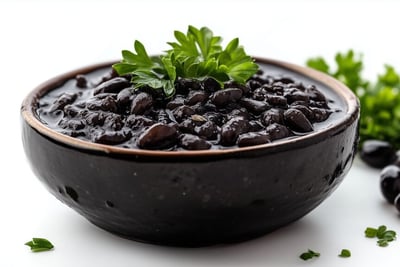

Sustainable Travel in Croatia
Croatia is a leader in sustainable tourism:
Eco-Friendly Stays: Choose green-certified hotels in Istria or eco-lodges near Plitvice.
Support Local: Shop at markets and dine at family-run konobas (taverns).
Minimize Waste: Use a reusable water bottle and avoid plastic on Croatian beaches.
Tip: Opt for ferries or buses over flights for island travel to reduce your carbon footprint.
Final Thoughts: Plan Your Croatia Vacation Today
Croatia in 2025 is a destination that captivates with its stunning coastlines, Croatian culture, and affordable charm. Follow these travel tips for Croatia to plan a seamless trip, book the best places to stay in Croatia, and explore the top attractions in Croatia. From Dubrovnik’s historic walls to Hvar’s sun-soaked beaches, your Croatian adventure awaits.
Ready to go? Secure flights to Croatia and find Croatia accommodations to start your journey. For guided tours and activities, check trusted platforms. Happy travels, and enjoy the magic of Croatia!
Explore
Join us for travel tips and adventures.
Discover
Connect
europeletstravel@gmail.com
© 2024. All rights reserved.
